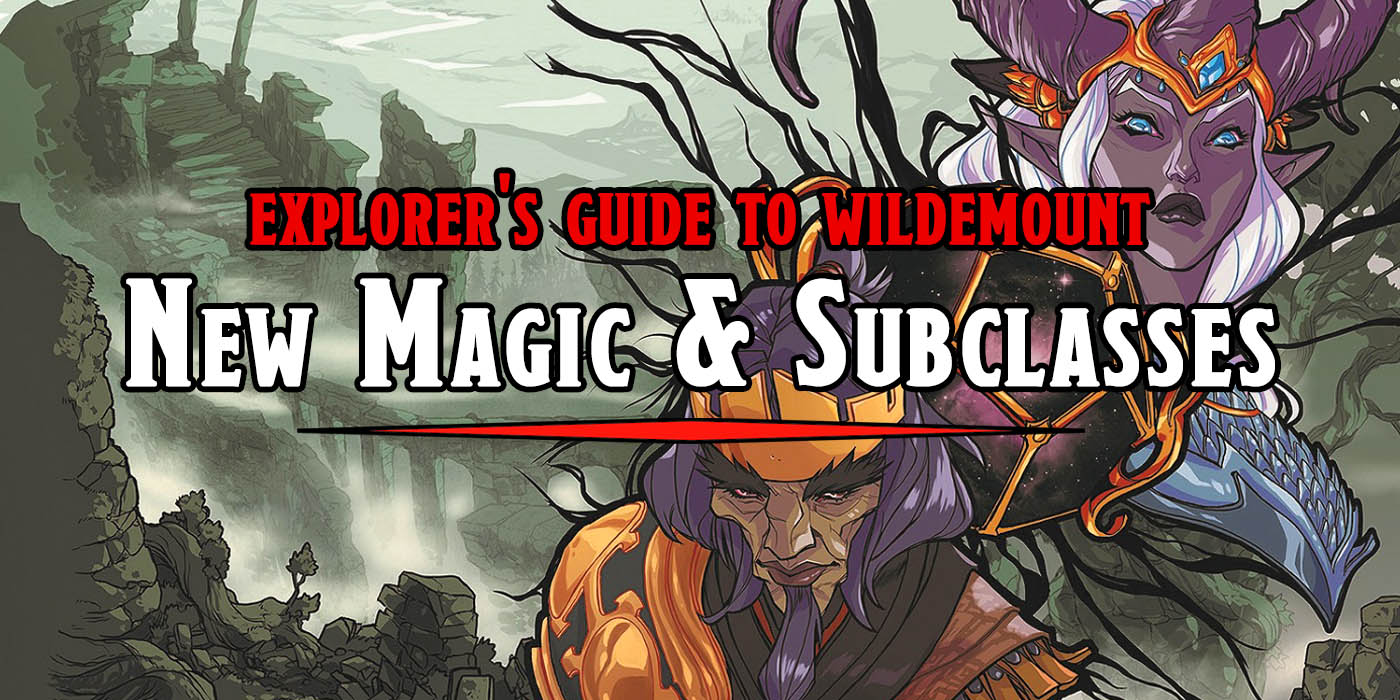D&D: New Magic And New Subclasses Unveiled In Explorer’s Guide To Wildemount

The details keep coming for the new Explorer’s Guide to Wildemount. Today we’re taking a look at three new subclasses that will be introduced in the book.
Following the big announcement that the next D&D book is the Explorer’s Guide to Wildemount, a Critical Role-focused book that takes players into the setting of Wildemount, which folks will recognize as the central focus of Campaign 2 of the popular livestreamed show. Earlier, author and series DM Matt Mercer revealed that he’s been hard at work on the book for the last year and a half, and is excited to share the world and work of many community artists with fans of D&D and Critical Role alike. If there was any doubt about the interest in this book, as of press time it’s sitting at the #1 bestselling book on Amazon.
That’s an impressive feat for any D&D book, let alone one for a campaign setting, but this is the world we live in. What makes it so popular? Well aside from the army of Critters, this new book features a new take on magic for D&D, as well as three new subclasses that all revolve around it. It’s a particular brand of magic that has been developed by the drow in Mercer’s world, discovered by a primeval gods, known as The Luxon. There’s a lot of lore to get through, but the gist of it is that Dunamancy is a manipulation of space, time, and possibility.
If this sounds like some Final Fantasy magical nonsense, you’d be right. This does seem to evoke spells like Demi and Gravity and the like–but it’s also its own particular thematic element in Critical Role’s Exandria. Dunamancy is the manipulation of probability. As Mercer explained, it’s drawing on the potential that builds up around a moment of decision, and manipulating space and time and gravity allows for some real creative spells, including ones like Gravity Fissure which is a line that draws creatures within 10ft of its area into the center before dealing damage along the line (similar to, but strikingly different from a Lightning Bolt). Or Reality Break which allows you to pull dimensional alterations onto a creature as you collapse their probabilities similar to a confusion spell but more… timey-wimey.
Dunamancy is at the heart of each of the new subclasses introduced in the book: the Echo Knight, the Chronurgist, and the Graviturgist. Let’s take a look!
The Echo Knight is a Fighter Subclass that’s focused on pulling alternate reality “echoes” of themselves. As moments of decision approach, they tap into the collapsing possibilities and temporarily pull an alternate version of themselves from a timeline that might have been into reality, temporarily, and use it as an ally on the battlefield that can protect allies, scout ahead, fight in battle, and help teleport things around the battlefield. This offers some unprecedented mobility and battlefield support for a fighter, and while these are originally the elite warriors of the Kryn Dynasty, soon they’ll be coming to a campaign near you.
Chronurgists, on the other hand, are Time Mages. The Chronurgist is a new Wizard Subclass, specifically focused on manipulating time, whether through spells (including existing spells like Haste/Slow or Time Stop) or new temporal powers that the Subclass unlocks. Like a feature that can temporarily put an opponent in stasis, or perhaps they might grant themselves an initiative boost, or freeze a spell in a moment of time that can be passed around to other players. It sounds like a lot of support for a Wizard, and temporal magic is a ripe field for new spells.
Graviturgists, then, focus on the gravity element of Dunamancy. These mages are all about manipulating gravity on the battlefield, and is a dream for anyone who wants to play a wizard focused on battlefield control. They can manipulate the density of other creatures, allowing themselves or a target creature to move faster or jump higher by altering their density. Or they might be able to accelerate an ally’s attack with a sudden surge of gravitic power. Spell-wise, they create gravity-centric spells that pull and push creatures around on the battlefield, as the aforementioned fissure spell.
Of the three, this is the one I’m most interested in. Just hearing it, I’m reminded of the best parts of playing a Jedi in Star Wars Saga, or the powerful biotic abilities in Mass Effect, which are all about throwing opponents around the battlefield or creating singularities that do all kinds of crazy things. Manipulating the battlefield so directly is what really makes a Wizard work for me.
All three of these new subclasses debut in the Explorer’s Guide to Wildemount, and we’ll be keeping a sharp eye out for more details as they emerge.
What subclass do you want to try out? Let us know in the comments, and, as always, Happy Adventuring!






